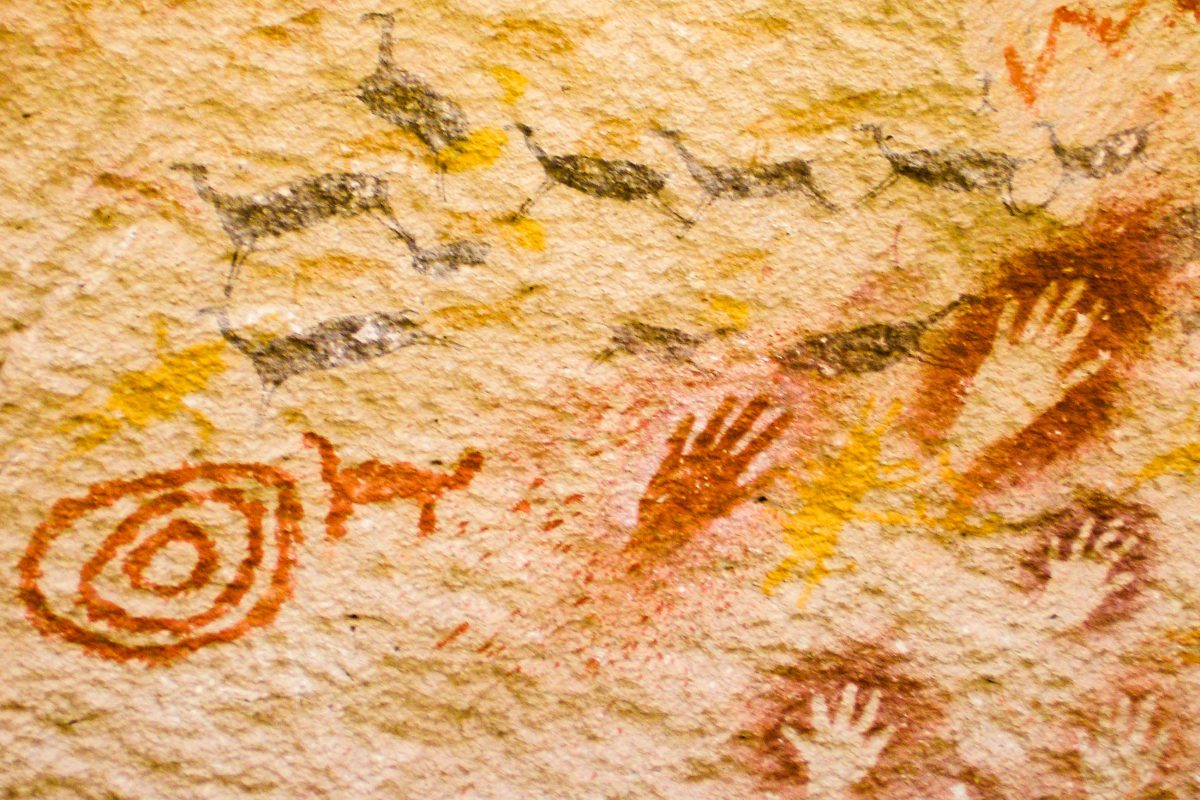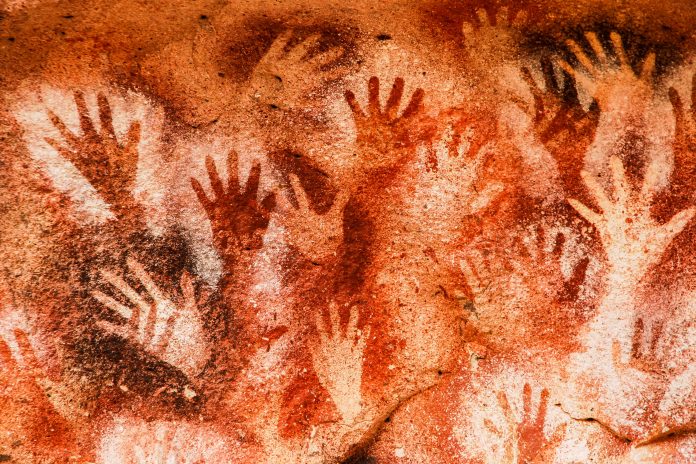Die Cueva de las Manos ist für ihre jahrtausendealten Höhlenmalereien bekannt. Unzählige Hände, aber auch Menschen und Tiere sind an den Wänden der Höhle abgebildet und ziehen seit den 1960er Forscher und Besucher in ihren Bann.
Die Cueva de las Manos („Höhle der Hände“) liegt in der Einsamkeit der argentinischen Provinz Santa Cruz im Süden von Argentinien etwa 160km südlich von Perito Moreno. Seit den 1960er Jahren ziehen die spektakulären Felszeichnungen Forscher und Besucher in ihren Bann. 1999 wurde die Cueva de las Manos auf die Weltkulturerbeliste der UNESCO aufgenommen.
Inhaltsverzeichnis
Wie kommt man am besten zur Cueva de las Manos?
Die Höhle liegt im Tal des Pinturas River, einer ziemlich abgelegene Gegend Patagoniens, die am besten über die Schotterpiste RP 41 erreicht werden kann. Diese zweigt etwa 3km nördlich von Bajo Caracoles von der Ruta 40 ab. Der Pinturas Canyon liegt knapp 50km in nordöstlicher Richtung.
Die Höhle mit den einzigartigen jahrtausendealten Kunstwerken ist über 20m tief und 10m hoch. Zum hinteren Teil hin wird der Boden immer steiler, bis sich die Decke nur noch 2m über den Köpfen der Besucher befindet. Durch die geschützte Lage blieben die Felszeichnungen in ihren Original-Farben bis heute sehr gut erhalten.
Unzählige linke Hände

Die Cueva de las Manos erlangte durch ihre einzigartigen Wandmalereien weltweite Berühmtheit. Wie der Name schon sagt, sind ihre Wände über und über mit Malereien und Zeichnungen von Händen bedeckt.
Vermutlich waren die Künstler, die diese beeindruckenden Bilder schufen, alle Rechtshänder, denn auf den Wänden sind fast nur linke Hände abgebildet. Am Boden wurden mehrere Pfeifchen aus Knochen gefunden, mit denen die Farbe vermutlich über die eigene Hand als Schablone gesprüht wurde.
Aus diesen antiken Werkzeugen wurde errechnet, dass die Abbildungen 9.000 bis 13.000 Jahre alt sein müssen. Damit sind sie die ältesten von Menschenhand geschaffenen Werke Südamerikas. Etwa 700 nach Christus waren die Höhlen das letzte Mal bewohnt, wahrscheinlich durch Vorfahren des Volkes der Patagonier, auch Feuerländer genannt.
Warum diese Abbildungen?
Der Sinn dieser unzähligen Handbilder in rot, weiß, schwarz und gelb ist ungeklärt. Eine Theorie ist ein Ritus, der einen Jungen zum Mann werden lässt, da die Größe der Hände etwa auf die eines männlichen Teenagers schließen lässt.
Neben den Händen gibt es auch Abbildungen von Menschen und Jagdszenen, Lamas, Nandus, ein flugunfähiger Laufvogel, Raubkatzen und anderen Tieren, sowie geometrische Formen und Zick-zack-Muster.
Führungen durch die Cueva de las Manos
Geführte Touren durch die Cueva de las Manos werden etwa jede Stunde angeboten, auf eigene Faust darf man die unterirdischen Kunstwerke nicht erforschen.
Von den beeindruckenden Höhlenmalereien aus hat man außerdem einen atemberaubenden Blick über den Canyon, den der Pinturas River über Jahrtausende in die steinerne Landschaft geschnitten hat. Da auch die Region um die Cueva de las Manos eine wichtige paläontologische und historische Fundstätte darstellt, wurde sie durch die Gründung des Perito Moreno Nationalparks geschützt.
In den Canyons, Flüssen, Tälern und Seen wurden weitere Felszeichnungen entdeckt. Fossile Funde deuten auf ein urzeitliches Meer hin. Perito Moreno ist mittlerweile als archäologische Hauptstadt der Provinz Santa Cruz bekannt.





